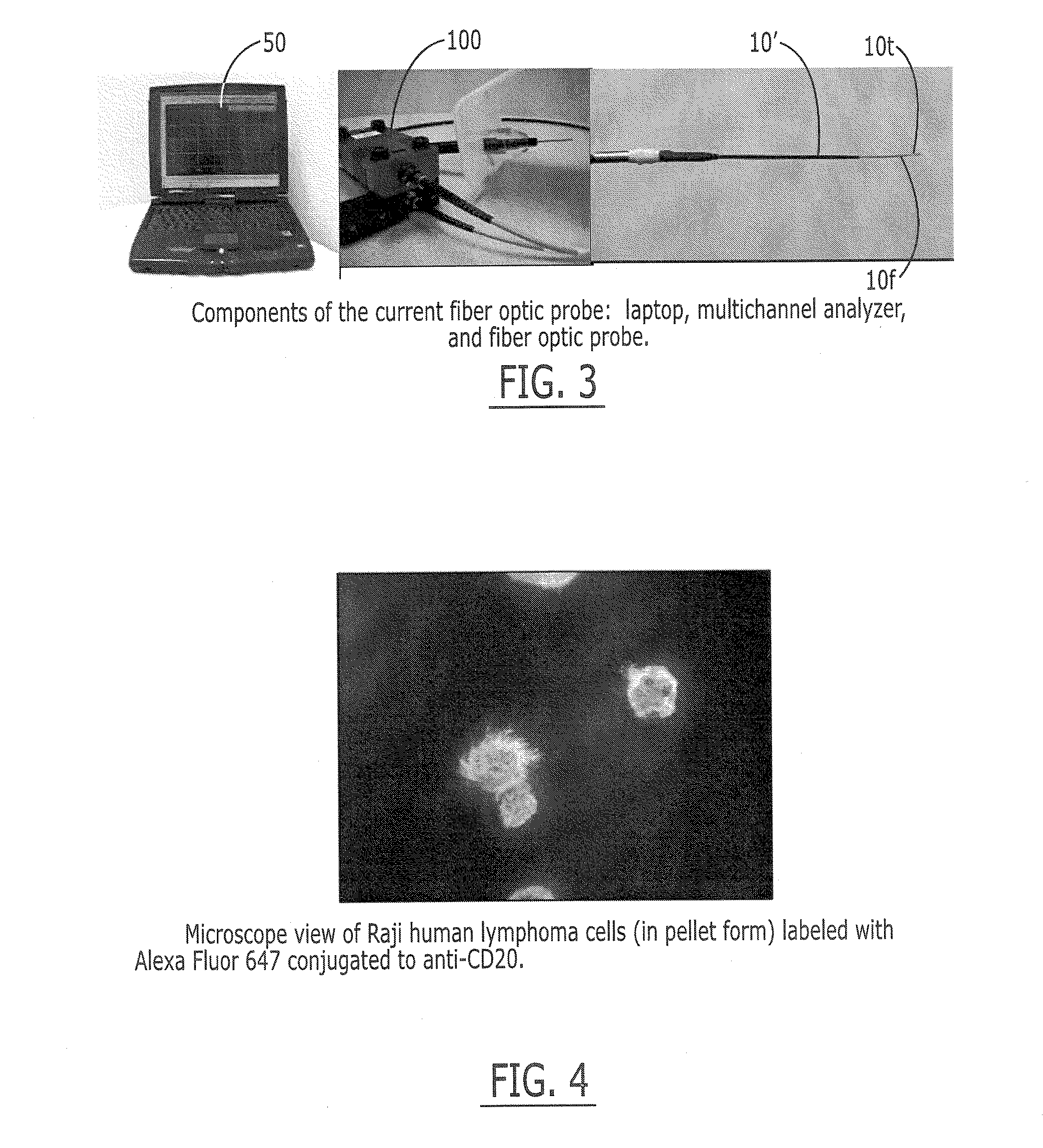In vivo fluorescence sensors, systems, and related methods operating in conjunction with fluorescent analytes
- Summary
- Abstract
- Description
- Claims
- Application Information
AI Technical Summary
Benefits of technology
Problems solved by technology
Method used
Image
Examples
examples
[0149]The fluorescence sensor systems described herein provide real-time, acute and / or chronic, measurement of fluorescently labeled analytes in vivo allowing pharmacokinetics and pharmacodynamics of antibody-based therapies to be assessed on an individualized basis. Initial experiments were successfully completed with a catheter-based version of the probe. The probe uses a laser diode illumination source and an optical multichannel analyzer. The laser diode (650 nm) source effectively penetrates several millimeters of tissue. The antibodies were labeled with Alexa 647 fluorophore (Molecular Probes, Eugene, Oreg.). In vitro tests confirmed this wavelength provides good light transmission through blood, tissue, and serum. Calibration studies with fluor in a colloidal gelatin mixture demonstrated sensitivity in the <10 ng / ml range.
[0150]Experiments were performed using two human cancer cell lines: Raji Burkitt's human lymphoma and BT474 human breast adenocarcinoma. The targeted antige...
PUM
| Property | Measurement | Unit |
|---|---|---|
| Time | aaaaa | aaaaa |
| Time | aaaaa | aaaaa |
| Power | aaaaa | aaaaa |
Abstract
Description
Claims
Application Information
 Login to View More
Login to View More - R&D
- Intellectual Property
- Life Sciences
- Materials
- Tech Scout
- Unparalleled Data Quality
- Higher Quality Content
- 60% Fewer Hallucinations
Browse by: Latest US Patents, China's latest patents, Technical Efficacy Thesaurus, Application Domain, Technology Topic, Popular Technical Reports.
© 2025 PatSnap. All rights reserved.Legal|Privacy policy|Modern Slavery Act Transparency Statement|Sitemap|About US| Contact US: help@patsnap.com



